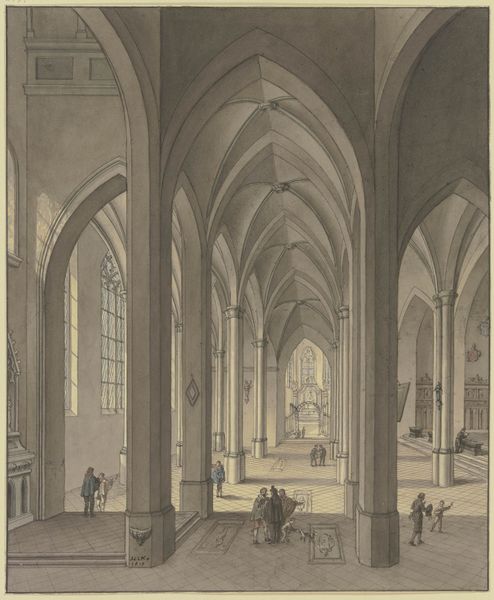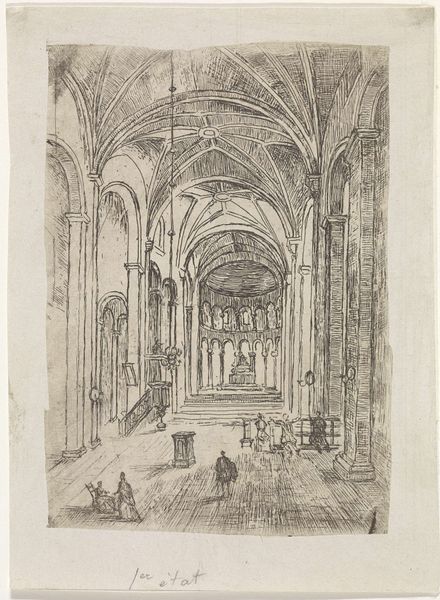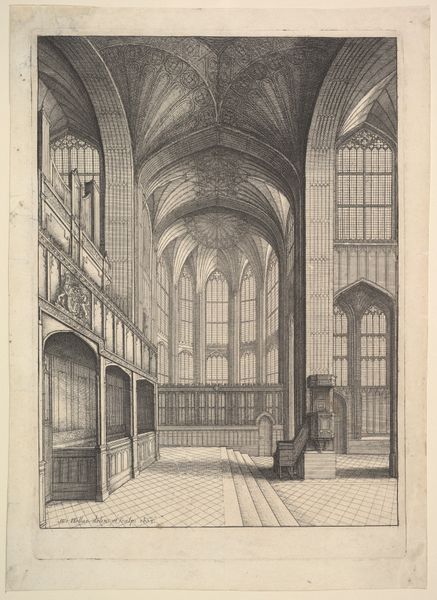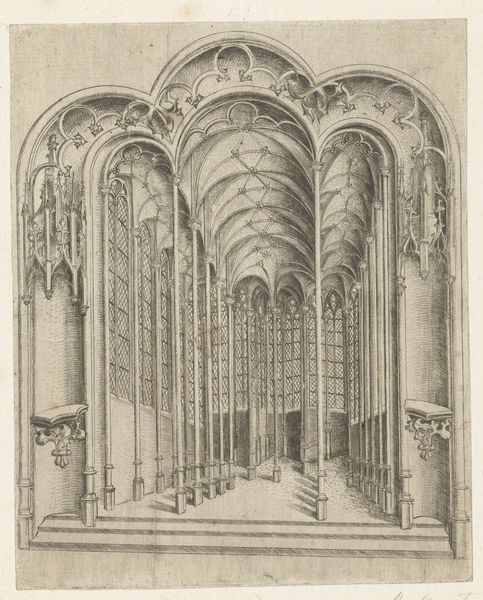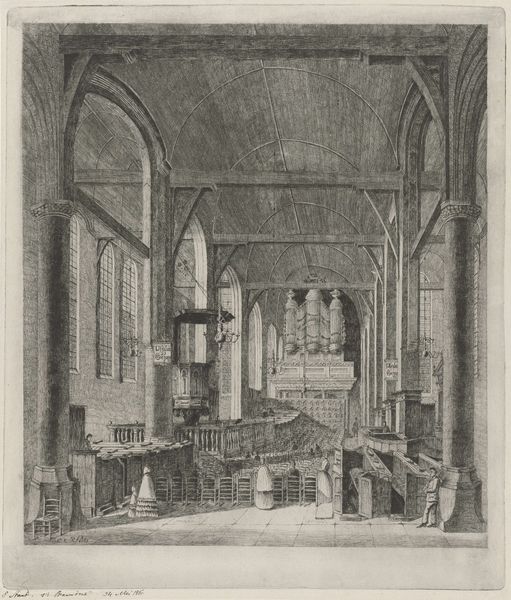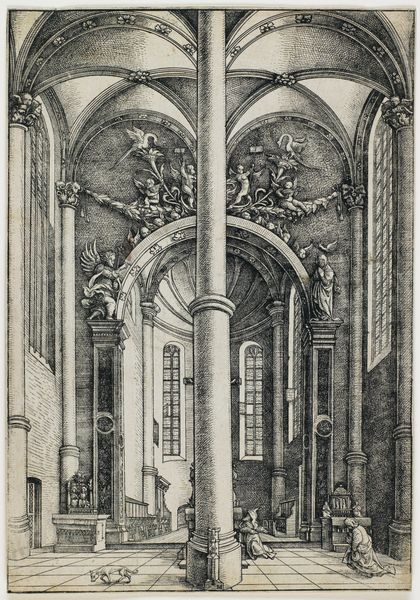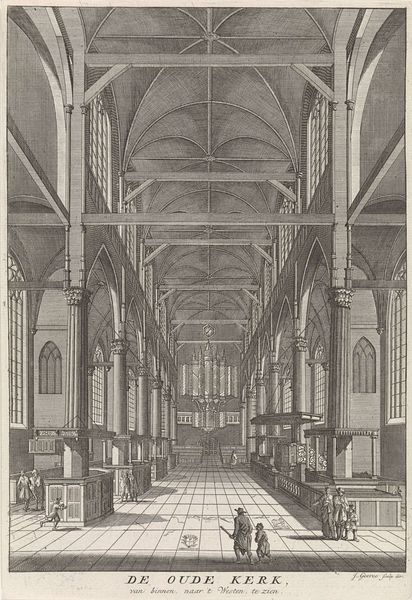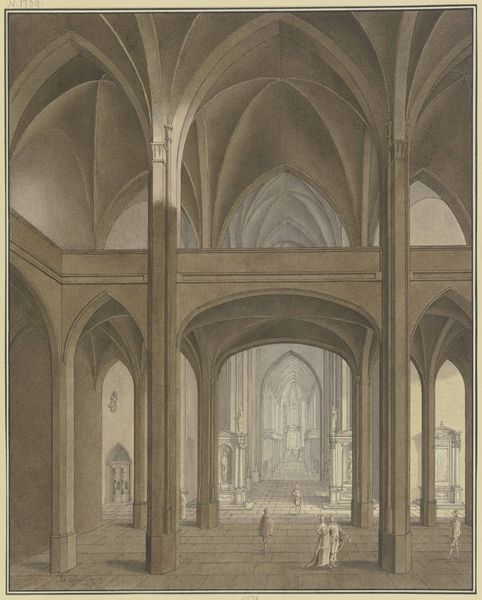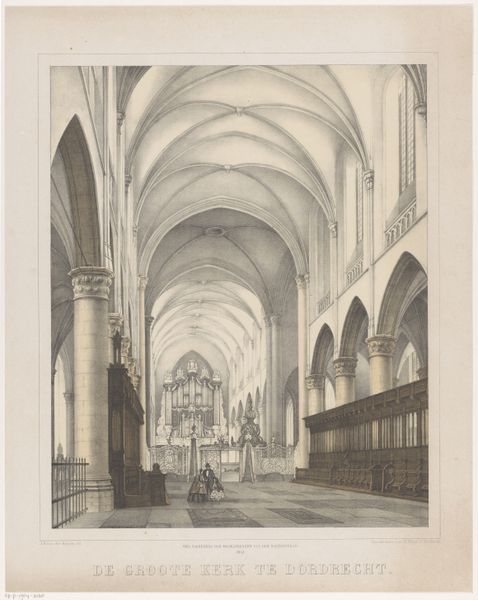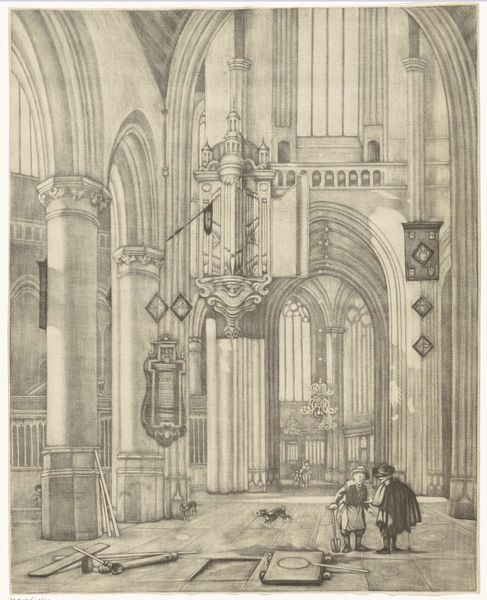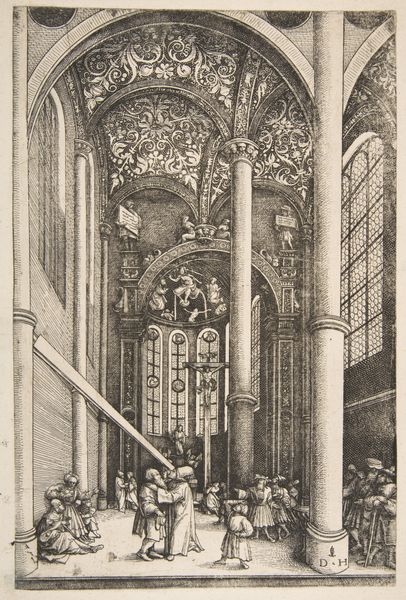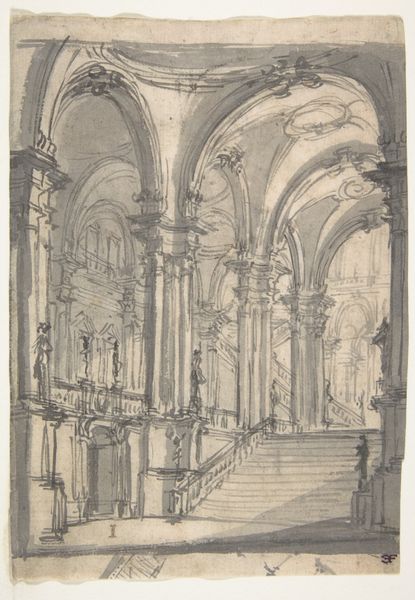
Interior of the Church of Saint Maria Magdalena with the Parable of the Offering of the Widow c. 1530
0:00
0:00
drawing, print, etching
#
drawing
#
pen drawing
# print
#
etching
#
perspective
#
11_renaissance
#
line
#
history-painting
#
northern-renaissance
Dimensions: sheet (trimmed to plate mark): 29 x 20.1 cm (11 7/16 x 7 15/16 in.)
Copyright: National Gallery of Art: CC0 1.0
Curator: This intricate print depicts the interior of Saint Maria Magdalena Church, a work attributed to Daniel Hopfer from around 1530. The full title is quite a mouthful: Interior of the Church of Saint Maria Magdalena with the Parable of the Offering of the Widow. It's an etching, showcasing remarkable detail for its time. Editor: The immediate sense I get is one of overwhelming architectural grandeur, rendered in painstaking detail, almost reverential. The perspective is intensely focused, drawing you in despite the lack of color. Curator: Precisely. Hopfer, working during the Northern Renaissance, expertly uses line and perspective to create this sense of vastness within the print's relatively small space. It's a beautiful example of how printmaking allowed for the dissemination of architectural ideas and biblical stories to a wider audience. Editor: And considering the parable represented – the widow's mite – there’s a poignant juxtaposition. The opulence of the architecture seems almost to indict the societal structures that might necessitate the widow's sacrifice. What do we know about the patrons of such pieces, who would have commissioned or purchased them? Curator: These prints were not necessarily commissioned in the same way paintings were. They served various purposes – from illustrating books to being sold as individual artworks for collectors, clergy, and even architects seeking inspiration. Hopfer's technique allowed for relatively quick reproduction, making them accessible. The theme itself, drawing from the Gospels, likely appealed to a broad Christian demographic. Editor: It makes you think about the circulation of wealth, both literal and spiritual. Who benefited from such grandeur and who paid the price? It's tempting to interpret this not just as religious devotion but as a reflection on social inequality, brought to life through art. The scale is misleading - such an image imprints these ideas upon potentially any home that hosts it, making even an activist movement possible. Curator: Certainly, we can analyze the artwork as reflecting societal dynamics. The scene of the widow’s offering serves as a counterpoint to the imposing architecture, prompting questions about wealth and piety, though some see it as primarily a display of skilled perspective drawing within the context of religious art. Editor: True, and perhaps the beauty lies in that duality, allowing for both devotional appreciation and critical social commentary. The interplay between religious narrative, architectural representation, and printing technique encapsulates a fascinating moment in cultural and artistic history. Curator: I agree. Hopfer’s rendering offers a snapshot of 16th-century values, beautifully visualized, and available for us to dissect even now.
Comments
No comments
Be the first to comment and join the conversation on the ultimate creative platform.

